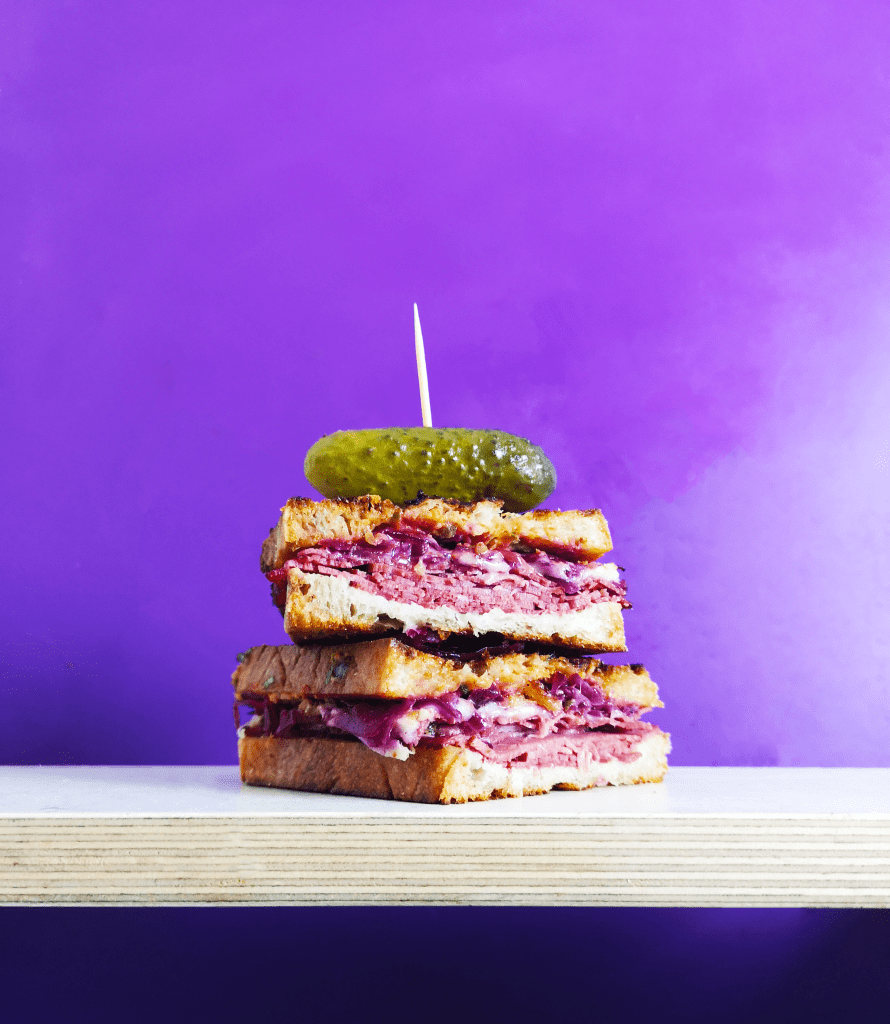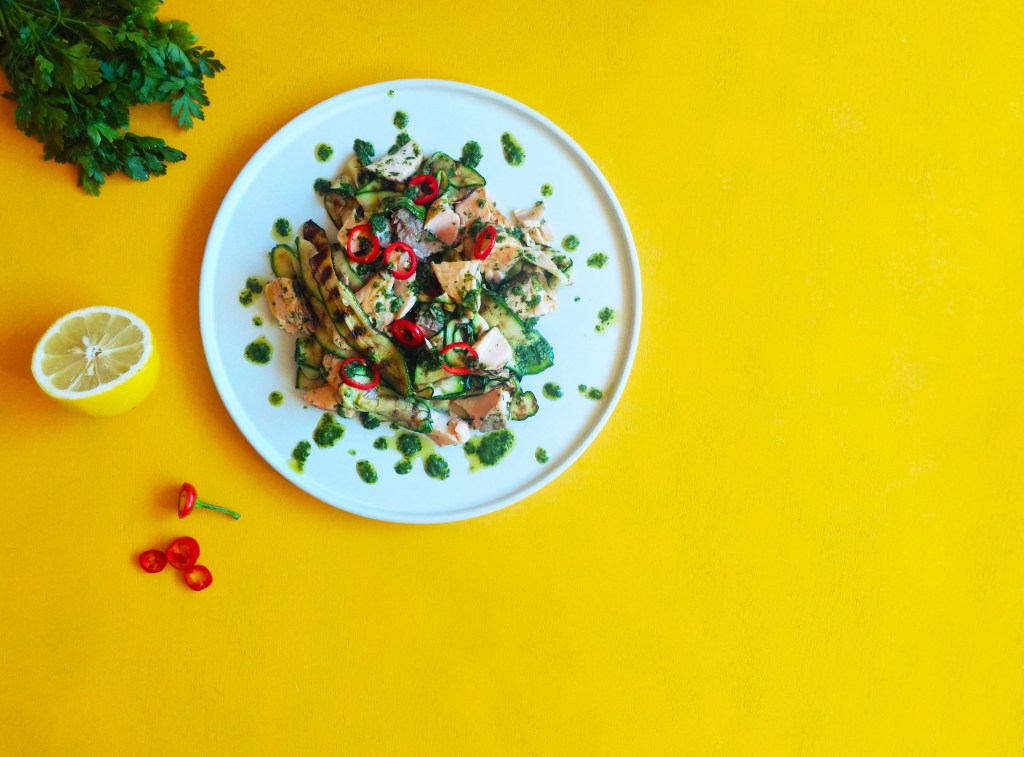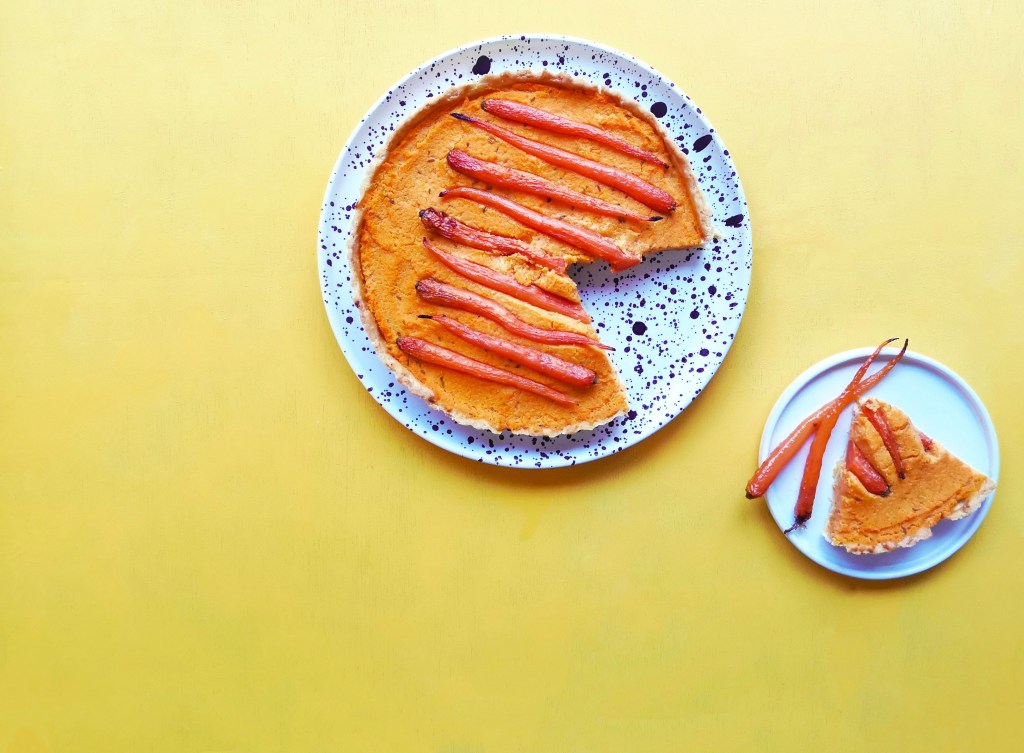Recipe: Charred courgette & salmon with herb sauce
As the spring approaches we’re looking to ditch the stews and pies in favour of lighter, healthier dishes. Lets be honest the thought of bearing our carb loaded winter bodies right now is quite a scary prospect and so we’ve enlisted the help (basically begged!) of FYOUFODMAP’s Nikki Griffith who’s shared some of her bloat beating recipes.
Charred Courgette & Salmon with her sauce.
Courgettes can be a bit bland, so the cooking of them is mega important here. Don’t get impatient, you need to wait for the char. It’ll add depth and smokiness and will give you the perfect backdrop for the more punchy salmon.
Guidance from Monash University says that up to 100g of courgette is low in FODMAPs. Anything higher and you’ll come up against high amounts of fructans. That means you can pretty much eat one courgette per person (by the time you’ve lost the end bits and a few scraps). The restrictions on size definitely put this into the ‘light’ dinner category so if you’re hungry, maybe add a potato salad on the side.
400g courgettes
4 large, skinless and boneless salmon fillets
1 red chilli, sliced
For the dressing:
20g basil (including stalks)
8g parsley leaves
10g spring onion greens
Juice of half a lemon
75ml extra virgin olive oil
15ml garlic-infused olive oil
Half a teaspoon of salt
Serves 4 for a light lunch or dinner
Slice your courgettes lengthways (I use a mandolin for this on the second-to-thinnest setting). Heat some oil in a large griddle pan and cook your courgettes in a single layer until you see visible dark char lines, then flip them and repeat on the other side. You’ll need to do this in several batches but I promise, the time investment is worth it. If you put them all in at once then you run the risk of a mushy mess and none of the char flavour. Once all your courgettes are done, pop them in your oven to keep warm on the lowest heat setting.
In a frying pan, heat some oil and then add your salmon fillets (the oil should hiss as you add them if hot enough). Cook them for 3 to 4 minutes on each side depending on how you like them to be done. I like mine still a bit blush in the middle so I do 3 minutes each side.
Meanwhile, combine all the ingredients for the dressing in a food processor*.
Once your salmon is ready, remove it from the pan and flake it into large chunks. Then carefully combine everything in a large bowl, making sure not to break the salmon up too much, and serve with some sliced red chilli on top.
*If you don’t have a food processor, try finely (and I mean finely) chopping your herbs, mixing all the sauce ingredients together and pressing with a pestle. It won’t be quite the same but it’ll still be fresh and zingy.
As mentioned, if you’re following a low FODMAP diet then you’ll need to stick to these amounts. If you’re not, you can add extra courgette for a more substantial serving.
WHAT IS THE LOW FODMAP DIET?
It’s a diet that’s been specially developed by the clever researchers at Monash University in Melbourne, to help relieve people suffering with IBS, which affects 1 in 7 people, from the associated symptoms.
The word FODMAP is an acronym, standing for:
Fermentable (basically that refers to foods that are broken down by gut bacteria and then produce gases in your belly)
Oligosaccharides (in particular: wheat, onions and garlic)
Disaccharides (that’s lactose to you and I)
Monosaccharides (a.k.a. fructose – found in honey, high-fructose corn syrups and fruits like apples)
And
Polyols (Sorbitol & Mannitol – these are found in some fruits and vegetables)
You can find a full list of foods you can and can’t eat on the Monash FODMAP app.
The idea of the low FODMAP diet is to cut from your diet foods high in FODMAPs, for a period of 6 to 8 weeks. For some people with a gut-imbalance such as SIBO, they may be able to go back to eating as normal. Others will gradually re-introduce foods back into their diet, helping them to identify which are causing nasty symptoms.
For more about Nikki or to read more of her recipes please visit www.fyoufodmap.com or follow her on instagram at @fyoufodmap







